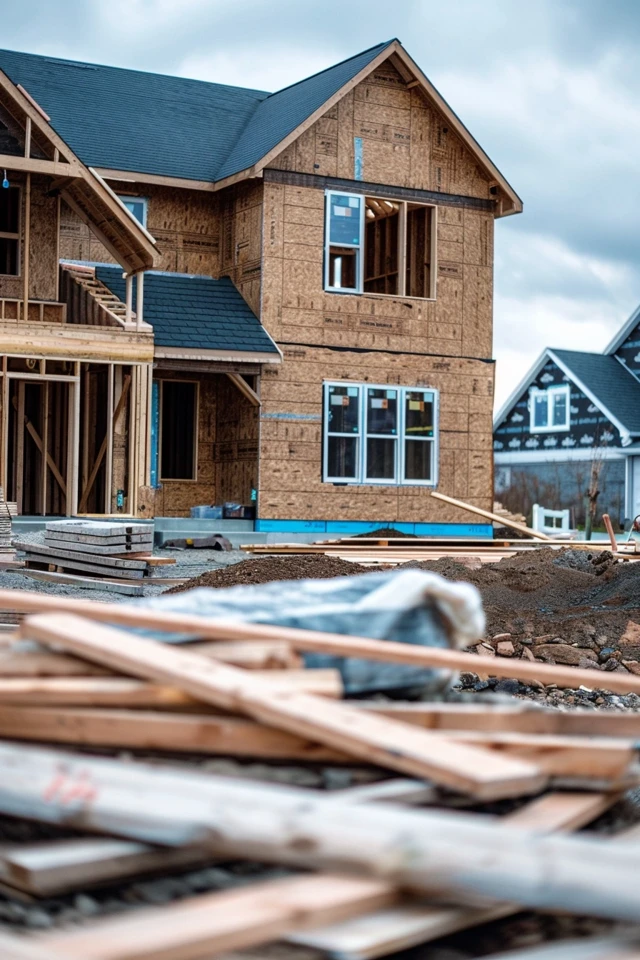Hello, I’m excited to share with you some essential tips on how to frame a house. In the construction process, house framing is a crucial step that lays the foundation for a strong and durable structure. By understanding the basics of house framing, you can ensure that your home is built to last.
House framing involves creating the structure that will support the entire building, including the walls, floors, ceilings, and roof. It starts with framing the floor, attaching sill plates to the foundation and floor joists. Then, exterior and interior walls are framed using studs, plates, and sheathing. The ceiling and roof are also framed with horizontal ceiling joists, angled rafters, and sheathing. Framing doors and windows is another essential aspect to consider.
Proper house framing is essential for creating a structurally sound and durable home. By using the right materials and following the correct techniques, you can ensure that your house is built to withstand the test of time. Let’s delve deeper into the types of house framing and explore the various options available.
Key Takeaways:
- Framing a house is a crucial step in the construction process.
- House framing involves creating the structure that supports the entire building.
- Start by framing the floor, then move on to the walls, ceiling, and roof.
- Proper framing is essential for a structurally sound and durable home.
- Understanding the types of house framing available will help you make informed decisions.

Types of House Framing
When it comes to house framing, there are several methods and materials used in construction. Let’s explore some of the most common types of house framing:
1. Platform Framing
Platform framing is the most popular type of house framing in modern construction. It involves framing each floor separately, starting with the foundation and then adding the walls, floors, and roof. This method offers flexibility and ease of construction, making it cost-effective.
2. Balloon Framing
Balloon framing, an earlier method once popular from the late 1800s to the mid-1900s, involves long framing members that extend from the foundation to the top of the second story. This method creates uninterrupted wall cavities, allowing for easy installation of utilities. However, it is less common today due to fire safety concerns.
3. Steel Framing
Steel framing is known for its durability, strength, and resistance to pests and rot. This method uses steel columns, beams, and studs instead of traditional wood framing. While steel framing is more expensive upfront, it offers long-term benefits and is often used in commercial construction or in areas prone to hurricanes or earthquakes.
4. Timber Framing
Timber framing, also known as post & beam framing, is an ancient method that uses heavy timbers to create the structural frame. This method offers an aesthetic appeal, with visible timber beams and posts. However, it requires skilled craftsmanship and is often used in traditional or specialty construction projects.

5. Lumber
Lumber is the most commonly used material for house framing. It provides a cost-effective and versatile option for framing walls, floors, and roofs. Douglas fir is a popular choice due to its strength and dimensional stability. Other types of lumber, such as spruce and pine, are also widely used in construction.
6. Lightweight Steel Framing
Lightweight steel framing is gaining popularity for its durability, fire resistance, and resistance to moisture. This method uses light gauge steel studs, tracks, and joists that are lightweight yet strong. It offers a viable alternative to traditional wood framing, particularly in regions prone to termite infestations or wildfires.
Each type of house framing has its advantages and considerations. The choice of framing method depends on factors such as budget, building codes, design requirements, and regional considerations. Selecting the right framing style and material is essential for creating a structurally sound and durable home.
Conclusion
Framing a house is a complex and important step in the house construction process. Proper framing is essential for creating a structurally sound and durable home. By following the necessary house framing steps, including framing the floor, walls, ceiling, and roof, you can ensure that the building materials are securely supported and that the house can withstand the test of time.
One of the benefits of proper framing is the durability it provides. When a house is framed correctly, it can withstand a variety of external factors such as wind, snow, and earthquakes. Additionally, using the right type of framing materials, such as lumber or steel, can further enhance the durability of the structure.
Another benefit of proper framing is cost-effectiveness. A well-framed house is less likely to experience structural issues, minimizing the need for expensive repairs in the future. Additionally, proper framing allows for efficient insulation and HVAC installation, resulting in energy savings and lower utility bills.
Lastly, proper framing can provide resistance to fire and moisture. When the house is framed correctly, it can have fire-resistant properties, reducing the risk of fire damage. Also, proper framing techniques can prevent moisture penetration, helping to maintain a dry and comfortable living environment.

